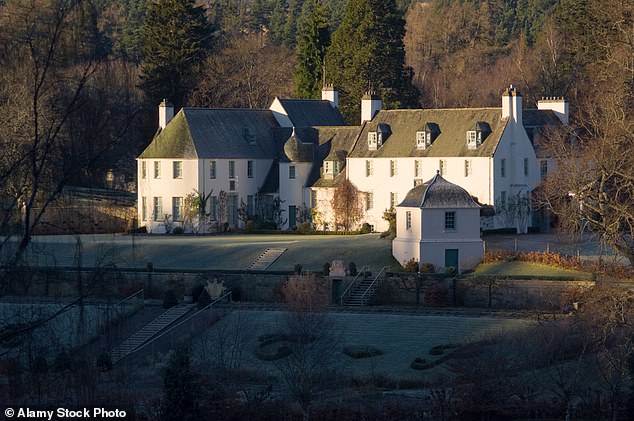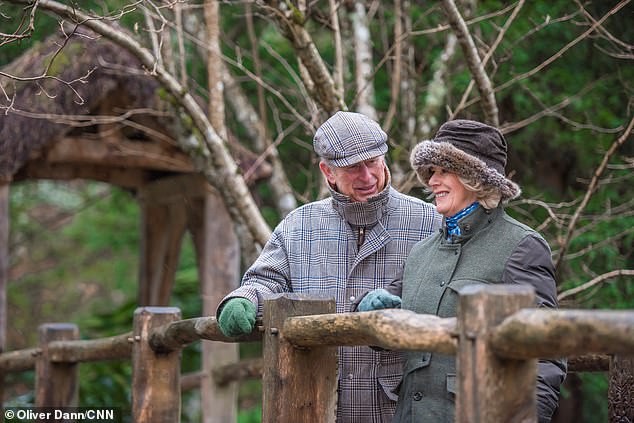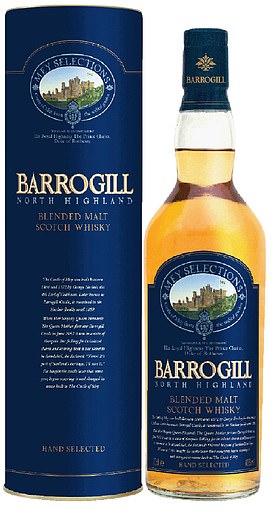Just before Hogmanay 2004, Prince Charles, as he was then, whisked his long-term partner Camilla Parker-Bowles off to Scotland for a romantic break.
Their destination was Birkhall, Charles’s beloved private bolthole on the Balmoral estate. And it was there, on a frosty night in front of a roaring fire, where Charles ‘sank to one knee in front of the woman he loved and popped the question’.
It is little surprise that the King chose to propose at Birkhall, a place he once referred to as ‘a unique haven of cosiness and character’ and which is rumoured to be his favourite home. After all, it is said to be the only one of his residences where he can truly relax. Away from the prying eyes of court and his subjects he can stick on a pair of wellies and go for a ramble, or look out the good whisky and settle down in a favourite chair with the papers.
Perhaps this is why, since that particularly special New Year nearly 20 years ago, the King and Queen have spent almost every Hogmanay since in Scotland, at Birkhall.
This year, Christmas at Sandringham – an immovable feast in the Royal calendar – was a particularly busy affair. The guest list was expanded to include the Queen’s children and grandchildren, meaning some staff had to give up their rooms to accommodate extra guests.
Tartan touch: Charles and Camilla on a visit north of the border in September 2021

Royal residence: Birkhall in Aberdeenshire has become an annual retreat for Charles and Camilla
There was also the traditional walk to church on Christmas morning followed by a formal lunch and a Boxing Day shoot involving a number of family members, as well as the legendary exchange of gag gifts (Princess Anne apparently presented her brother Charles with a white leather toilet seat one year).
It’s little wonder then, that once the wrapping paper has been cleared away and the Boxing Day kedgeree finished, the King and Queen are in need of a little respite.
The King’s Birkhall New Year tradition is something he has clearly been unwilling to give up since ascending the throne. His mother’s routine was to stay at Sandringham until the first week of February – in order to mark the death of her father King George VI, who died on February 6, 1952 – yet Charles is clearly keen to plough his own furrow.
Last year he and Camilla headed to Birkhall as usual, although there was, for the first time, the addition of the sovereign’s red boxes, which will again travel north with him. But otherwise, the King’s time at the baronial home – informal, relaxed, down at home – is unchanged.
Birkhall New Years, then, have their own particular flavour. There are often a few house guests – Camilla’s sister Annabel Elliot and her husband Simon are regular visitors, as is former Conservative MP Sir Nicholas Soames, a great friend of the King. The couple’s two Jack Russell terriers, Bluebell and Beth, also come. The crowd is described as ‘very much Charles and Camilla’s set’ – which is perhaps why, in the early years, William and Harry gave it a wide berth.
William and Kate did, however, spend their first Hogmanay as a married couple at Birkhall in 2011, while the two also pitched up in 2009 with Kate’s parents Michael and Carole Middleton in tow, sparking rumours a proposal was in the offing (it would, in fact, come ten months later in Kenya).
While the days are generally relaxed, there has been the occasional raucous Birkhall Hogmanay bash to see in the bells. In 2006, two of Charles’s personal chefs were understood to have been brought to cook a grand dinner, preparing prime Highland cattle steak, gamebirds shot near the river Dee, locally caught salmon and mushrooms grown by Charles himself. Booze included a 50-year-old malt whisky. Camilla, meanwhile, did the flower arranging, ceilidh music was played and guests, apparently, wore tartan.
An insider revealed Charles would ‘pull out all the stops for his party, which will probably go on into the early hours of the morning’. Gosh. No wonder the King once told friends on Deeside: ‘At Balmoral there’s a lot of dancing, and at Birkhall there’s a lot of drinking.’
In fact, there has only ever been one thing off the menu for Hogmanay party celebrations at Birkhall: fireworks, since it was feared the noise could scare Charles’s prize Indian Runner ducks. While the ducks – which Charles introduced to the Balmoral estate in 2005 and are rumoured to have irritated the late Queen because their fleet-footedness meant they were forever setting off security sensors – are believed to be no more, it is likely that fireworks will remain off menu, particularly as Hogmanay at Birkhall these days is believed to be a more sedate, low-key affair.
One thing that is for certain, however, is that the guest list remains highly exclusive.
Few have crossed the threshold of Birkhall – it is not a place where the King entertains dignitaries (that is what Balmoral is for), nor even many neighbours. When they hold an annual ball, staff put up a marquee.
Although hundreds of thousands has been spent on revamping the property since it passed to Charles in 2002 following the death of the Queen Mother, it is believed some relics from its previous owner still remain in residence. It has been claimed that some of the Queen Mother’s Vanity Fair ‘Spy’ cartoons still line the staircase, and that some of her blue raincoats still hang in the hall.
A downstairs loo is named ‘Arthur’s Seat’ after a favourite member of the Queen Mother’s household. It is, in every sense of the word, a family home, an entirely different prospect from the rambling corridors and stiff formality that the Queen stuck to at nearby Balmoral.
Some of the few invited guests at Birkhall are the local red squirrels. ‘We get them chasing each other round and round inside,’ the King said once.
‘If I sit quietly, they will do so around me. Sometimes, when I leave my jackets on a chair with nuts in the pockets, I see them with their tails sticking out, as they hunt for nuts. They are incredibly special creatures.’
In many ways Charles is following in the footsteps of Birkhall’s previous owner, his grandmother, who still entertained close friends at what she called the ‘little big house’ into her nineties, where guests would be treated to outdoor picnics, whatever the weather, followed by furious games of racing demon after dinner – not to mention a regular supply of gin.
Her late niece Margaret Rhodes once recalled: ‘At the end of the meal she would start a series of toasts. As well as “Hooray for” with glasses held high, there was even more of “Down with”, with glasses almost disappearing beneath the table. Combined with the nostalgic sing-songs, [it] always made for an unforgettable evening.’
It is perhaps notable too that one frequent guest in those days was a young Prince of Wales, who, when at school, enjoyed receiving letters from his grandmother bursting with news about the Birkhall gardens and the staff.
The couple’s first Hogmanay at Birkhall, when the King proposed on bended knee, was something of a logistical nightmare. The pair had spent Christmas apart – Charles at Sandringham, Camilla with her children Tom and Laura, and their respective families.
Charles had first to secure the support of his sons William and Harry and of his mother the sovereign before asking for Camilla’s hand, with the Queen apparently agreeing that ‘regularising’, in royal parlance, Camilla’s role was the best course of action for the efficiency of the Royal Family. She even agreed to Charles choosing Camilla’s engagement ring from the Queen Mother’s collection.
It was clearly a happy occasion: not only have they returned almost every year since, Charles and Camilla spent their honeymoon at Birkhall too. But in 2015, the royal couple found themselves at the centre of a national disaster when, the night before Hogmanay, Camilla woke up to the sound of rushing water and the rumble of boulders in what she later described as ‘the most frightening noise I have ever heard in my life’.
Storm Frank had arrived in Royal Deeside to wreak tremendous havoc. When Charles went outside he found his restoration project on the Birkhall gardens – which he had been working on for years – was in ruins.
The land, which includes a traditional kitchen garden where vegetables and cutting flowers are grown, was sectioned off by various hedges. Camilla enjoyed using plants from the garden in flower arrangements in the house.
But on that morning in 2015, most of it was flooded, and a huge part of the garden had been destroyed when the nearby River Muick burst its banks, damaging a bridge leading to the property. A gazebo, a memorial to the Queen Mother, roses, fruit trees and fruit and vegetable patches were also washed away.
Ballater had fared even worse, and when the King went into the village to visit he found that a number of businesses had been flooded, knee deep in water, as were many homes. Abergeldie Castle, near Birkhall, was in danger of collapsing into the River Dee. Many farmers in the region lost equipment due to the surge of storm water and some of their livestock drowned.

Then-Prince of Wales Charles and Camilla at Birkhall in Scotland in early 2005

Charles and Camilla pictured at the Birkhall bridge, the royal couple’s private residence on the Balmoral estate in Royal Deeside, Aberdeenshire, Scotland circa 2015
In the following days the King intervened to help flood victims, with the Prince’s Countryside Fund appealing to the public to help to create a relief fund.
That year, Hogmanay at Birkhall came and went without fanfare. There were no parties or jolly gatherings, as the Royal couple did what they could to help the flood relief effort.
The couple paid a number of visits to Ballater, including one to see flood victims rehoused in a local barracks, and called in favours from old friends, including a call from the King to Jim Walker, of Walkers shortbread, who agreed to send biscuits and shortbread to the emergency services.
Eight years on much of the area has been regenerated, including the King’s beloved gardens at Birkhall, but local affection for his rolled-up sleeves attitude towards the storm damage remains. Since then, the couple have only missed one Hogmanay at Birkhall, in 2020, when travel restrictions during the Covid lockdown meant they were unable to head north and instead had to stay put down south.
This year at Birkhall, the King’s second in the top job and his first since the Coronation, will no doubt be a chance for reflection on an extraordinary year and plans for what is to come.
And what better environment to do it than in the place where he feels most at home, after a bracing walk around the grounds, and with a whisky in hand?


